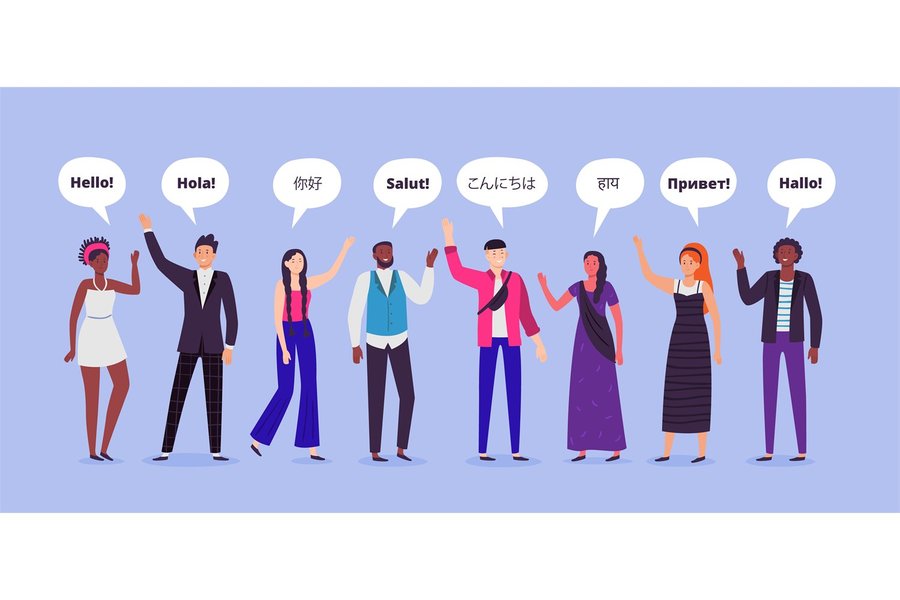
The Intriguing Journey of "Hello": From Attention-Getter to Ubiquitous Greeting
Unveiling the Surprising History and Modern Significance of a Simple Word
Key Insights into the History of "Hello"
- A Recent Arrival: Despite its widespread use today, "hello" is a relatively young word in the English language, with its first written appearance dating back to the early 19th century.
- From Exclamation to Greeting: Initially, "hello" and its variants were primarily used to attract attention or express surprise, rather than as a standard salutation.
- Edison's Influence: Thomas Edison played a significant role in popularizing "hello" as the go-to greeting for telephone conversations, a usage that quickly spread.
Tracing the Etymological Roots of "Hello"
The word "hello," while seemingly a fundamental part of modern English, has a surprisingly recent history. Its journey to becoming the prevalent greeting we know today is a fascinating tale of linguistic evolution and technological adoption.
According to various etymological sources, "hello" is believed to have originated from earlier forms such as "hallo," "hullo," and "holla." These precursors were not initially used as greetings in the sense of a polite salutation upon meeting someone. Instead, they served as interjections to attract attention or express surprise.
Early Forms and Their Functions
Tracing further back, "hallo" and "hollo" are thought to be alterations of "holla," an exclamation used to attract attention. This likely has roots in Old High German words like "halâ, holâ," which were emphatic imperatives used, for instance, when hailing a ferryman. There's also a potential connection to the French "holà," meaning roughly "whoa there!" This suggests the early usage of these words was more akin to a shout or a call to get someone's notice, rather than a formal or informal welcome.
Even earlier greetings in English often involved acknowledging the time of day, such as "good morning" or "good evening." The word "hail" also served as a greeting or acclamation, dating back to the Middle Ages and having connections to words related to health.
The Written Record
The first documented appearance of "hello" in writing with its current spelling is noted as being around 1826 or 1827 in publications in the United States. Before this, variations like "hullo" were recorded even earlier, around 1803, primarily with the function of calling attention or expressing surprise.
This evolution from an exclamation to a greeting highlights a shift in how the word was perceived and utilized over time. The transition wasn't immediate and was significantly influenced by external factors, particularly the advent of new technology.
The Telephone's Impact on Popularizing "Hello"
The widespread adoption of "hello" as a standard greeting is inextricably linked to the invention and proliferation of the telephone in the late 19th century. Before the telephone, various phrases were used to initiate communication, but a consistent, efficient way to start a conversation with an unseen party was needed.
Edison's Suggestion vs. Bell's Preference
While Alexander Graham Bell is credited with inventing the telephone, it was actually Thomas Edison who proposed and championed the use of "hello" as the standard telephone greeting. Bell, interestingly, preferred the nautical term "ahoy-hoy." Edison saw "hello" as a more practical and clear way to begin a telephone conversation, especially when connecting with an unknown person on the other end.
Edison's recommendation carried significant weight, and as telephone use grew, "hello" quickly became the conventional way to answer a call. This technological shift played a crucial role in transforming "hello" from a less common interjection into a fundamental part of everyday language.
The Rise of a Standard Greeting
The efficiency and simplicity of "hello" as a telephone opener contributed to its rapid spread. It provided a clear signal that a connection had been made and the conversation could begin. This function solidified its place as a primary greeting, moving beyond its original uses of attracting attention or expressing surprise.
Modern Usage and Significance
Today, "hello" is a universal greeting in the English language, used in a wide variety of contexts, both formal and informal. It serves as a simple and effective way to initiate communication, acknowledge someone's presence, and express friendliness.
Versatility of "Hello"
"Hello" is incredibly versatile. It can be used when meeting someone in person, starting a phone call, or even in written communication. Its meaning is generally understood as an expression of greeting or salutation.
Beyond a simple greeting, "hello" can also still be used to attract attention or express surprise, retaining some of its original functions. Phrases like "Well, hello there!" can indicate a level of surprise or a more informal, sometimes slightly impressed, acknowledgement.
"Hello" in Digital Communication
In the age of digital communication, "hello" remains a common way to begin emails, instant messages, and online conversations. Its conciseness and clear meaning make it suitable for various digital platforms.
Variations and Related Terms
While "hello" is the most common form, several variations and related terms exist in English and other languages. These highlight the diverse ways people initiate communication.
English Variations
Common English variations and informal greetings include "hi," "hallo," "hullo," "hey," "howdy," and "hiya." These often carry slightly different connotations in terms of formality or regional usage, but all serve the basic purpose of initiating social interaction.
Global Greetings
Greetings vary significantly across languages and cultures. Understanding these different forms is essential for effective cross-cultural communication. Here is a table showcasing some common greetings in different languages:
| Language | Greeting (equivalent to "Hello") |
|---|---|
| Spanish | Hola |
| French | Bonjour (day), Bonsoir (evening) |
| German | Hallo |
| Italian | Ciao (informal), Salve (more formal) |
| Japanese | Konnichiwa |
| Mandarin Chinese | Nǐ hǎo |
| Arabic | As-salamu alaykum |
This table illustrates just a small sample of the many ways people greet each other around the world. Each greeting carries its own cultural nuances and appropriate contexts for use.
The Cultural Impact of "Hello"
Beyond its linguistic function, saying "hello" holds cultural significance. It is often seen as a basic act of politeness and a way to acknowledge the presence of others. In many cultures, failing to offer a greeting can be considered rude.
World Hello Day
Recognizing the importance of communication and connection, World Hello Day is observed annually on November 21st. This day was established in 1973 by Brian and Michael McCormack to emphasize the importance of personal communication for maintaining peace. The simple act of saying "hello" to at least ten people on this day is encouraged as a way to promote understanding and respect across different cultures and perspectives.

A cheerful greeting can brighten someone's day.
"Hello, World!" in Programming
In the world of computer programming, "Hello, World!" is a classic introductory program that simply outputs the phrase "Hello, World!" to the user. This tradition, dating back to early programming languages, serves as a simple way for beginners to learn the basic syntax and structure of a new language. It symbolizes the initial interaction between the programmer and the computing environment, a digital "hello" to the world of code.
# This is a simple "Hello, World!" program
print("Hello, World!")
This simple program demonstrates the enduring presence of "hello" even in the technical realm.
The Power of a Simple Greeting
The evolution and widespread use of "hello" underscore the fundamental human need to connect and communicate. A simple greeting can break the ice, initiate a conversation, and build rapport. It's a foundational element of social interaction.
This video explores the origin and meaning of the word "hello," providing further context on its history.
Whether used to hail a ferryman centuries ago, answer a groundbreaking telephone call, or start a conversation in the digital age, "hello" has consistently served as a bridge for communication. Its journey from an exclamation to a ubiquitous greeting reflects the dynamic nature of language and its ability to adapt to new technologies and social norms.

"Hello" in different languages, illustrating its global reach.
Frequently Asked Questions about "Hello"
When was the word "hello" first used?
"Hello" is first attested in writing in the early 1800s, specifically around 1826 or 1827.
What did "hello" mean originally?
Originally, "hello" and its variants were used to attract attention or express surprise, rather than as a standard greeting upon meeting someone.
How did "hello" become a common telephone greeting?
Thomas Edison is credited with popularizing "hello" as the standard greeting for telephone calls, as it provided a clear and efficient way to initiate a conversation over the new technology.
Is "hello" related to other greetings?
Yes, "hello" is believed to have evolved from earlier forms like "hallo," "hullo," and "holla," which were used as interjections to attract attention. It may also have connections to older words like "hail."
Are there other ways to say "hello" in English?
Yes, there are many variations and informal greetings in English, including "hi," "hey," "howdy," and "hiya."
What is World Hello Day?
World Hello Day is observed on November 21st to promote the importance of personal communication for peace. Participants are encouraged to say "hello" to at least ten people on this day.
References
Last updated May 4, 2025